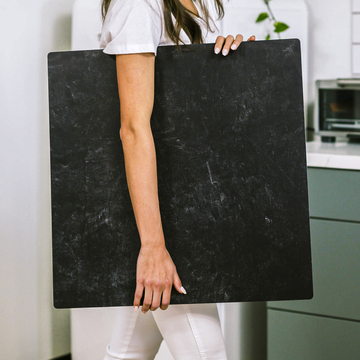You've dialed in your lighting. Your product is styled to perfection. The camera settings? Flawless. Yet when you review the shot, something feels... off. The shadows lack depth, the highlights feel flat, and your subject doesn't command attention like it should. What's missing? The unsung hero of professional photography: club backdrops.
While most photographers obsess over lighting gear and editing techniques, the pros know that your backdrop choice makes or breaks an image. Club backdrops - those deep, matte black or gray surfaces - aren't just another background option. They're a light-shaping tool that gives you absolute control over contrast and dimension.
What Makes Club Backdrops Different?
Unlike typical photography surfaces, club backdrops have three defining characteristics:
- Light-absorbing - They swallow stray light instead of bouncing it around
- True matte finish - Zero glare or reflections, just pure darkness
- Neutral density - Won't interfere with your color accuracy
Think of them as the photography equivalent of a soundproof room - they eliminate all the visual "noise" so your subject can shine without competition.
The Science Behind the Magic
Here's why standard backdrops work against you:
- White surfaces create unwanted fill light
- Textured backdrops scatter light unpredictably
- Glossy finishes add distracting reflections
A club backdrop solves all three problems by absorbing light instead of reflecting it. This gives you complete control over where shadows fall and how quickly light fades to black - what photographers call "falloff."
When to Break Out the Club Backdrop
These surfaces aren't just for moody shots. They're perfect for:
- Luxury product photography - Makes jewelry and glassware pop
- Food photography - Creates rich, dramatic shadows
- E-commerce shots - Eliminates distractions for clean product isolation
Pro tip: Try shooting the same product on white and black backdrops. The difference in perceived quality will shock you.
Common Pitfalls (And How to Avoid Them)
Even with the right backdrop, mistakes happen:
- Flat lighting - Solution: Add a backlight to separate subject from background
- Lost details in shadows - Solution: Use a soft fill light at 1/4 power
- Underexposed subject - Solution: Increase light-to-subject distance
Remember: A club backdrop is a tool, not a crutch. Master it, and you'll unlock studio-quality results from any shooting environment.
Ready to transform your photography? Grab a club backdrop and start experimenting today. Your portfolio will thank you tomorrow.


